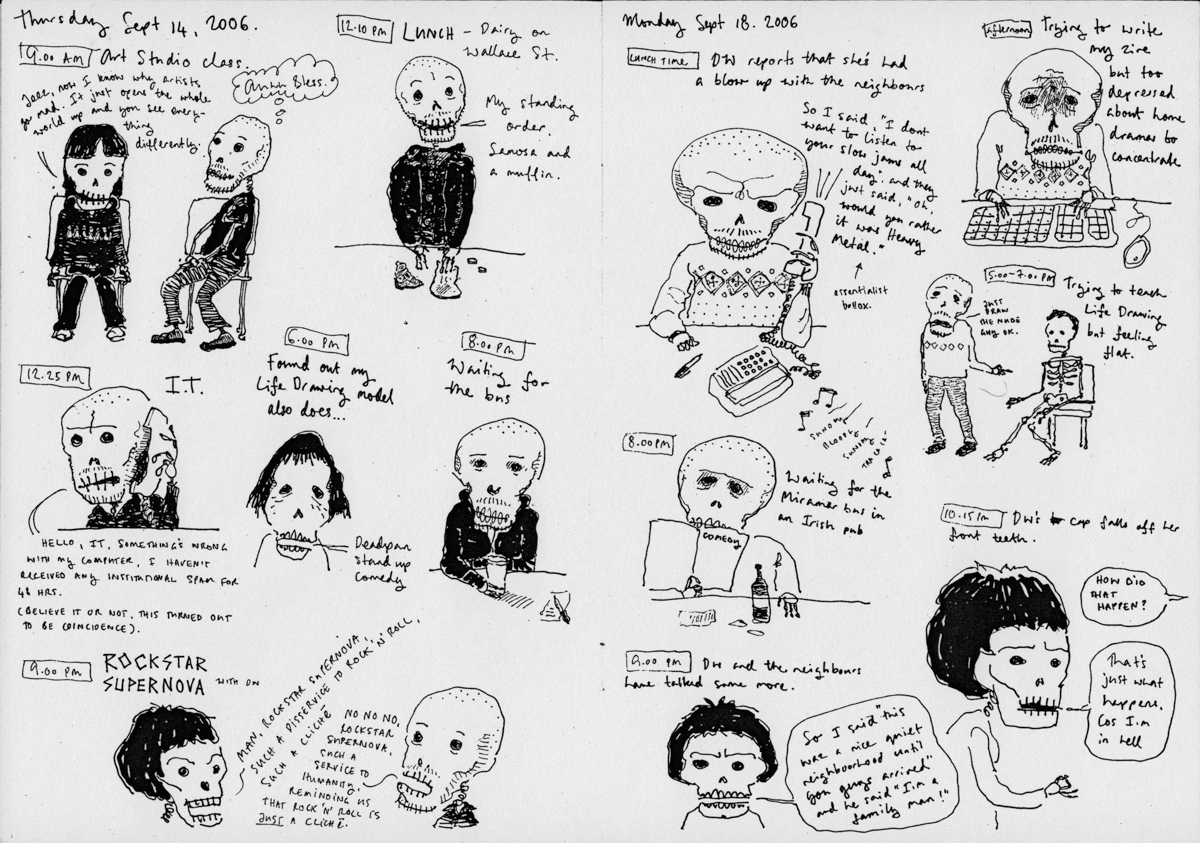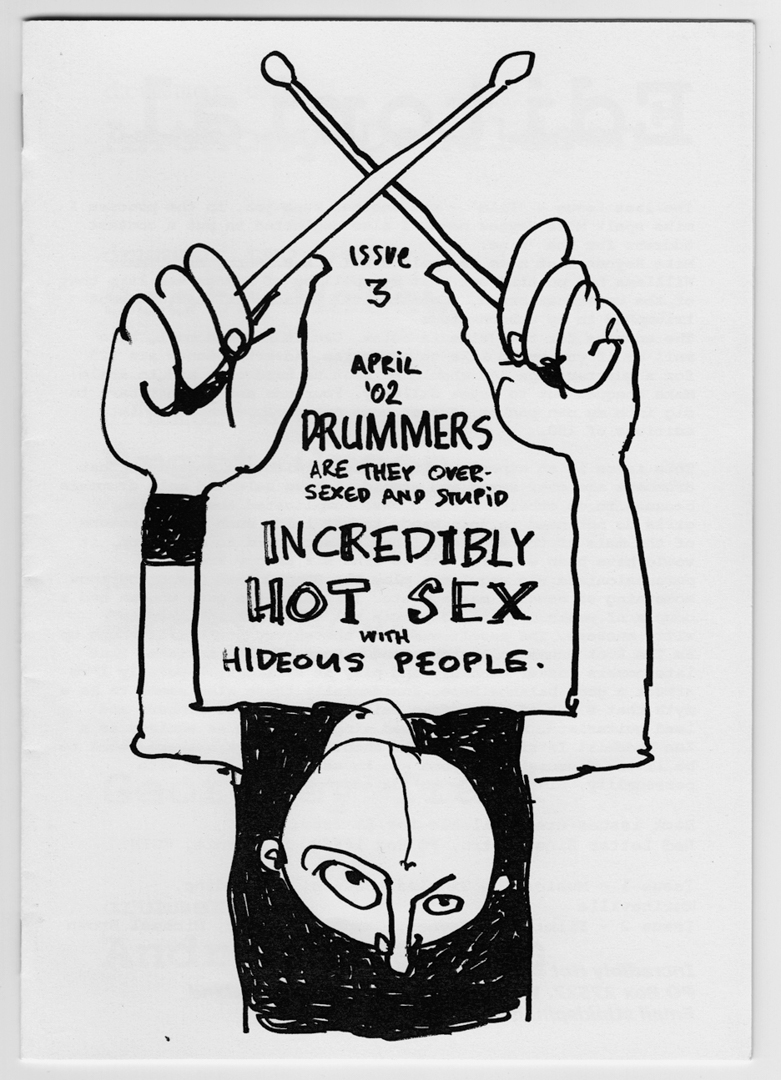Curb your surrealism – Steve Kerr

Bryce Galloway
2002–
The underlying, overarching and generally ongoing narrative in Bryce Galloway’s wryly fantastic Incredibly Hot Sex with Hideous People has been the author’s battle to have his work—the zine itself— recognised as worthy of fulfilling Massey University’s requirements for a Master of Fine Arts.
So far, so post-modern, and in different hands the entire exercise might come over as a clever conceit. But Galloway’s self-effacing frankness (his response to early criticism from his supervisor: “So there you have it. I suck.”) elevates it beyond that. There is genuine pathos and not a little dramatic tension in his dogged pursuit of the official endorsement of the academic arts world.
While this dogged pursuit seems to be laced with a healthy dose of ambivalence, Galloway is in no position to openly attack the establishment (if, indeed, he were ever tempted). Fortunately, there is no need. Instead, the guerilla tactic of reprinting verbatim the sophistic and obstructive jargon of academia which (to my untrained eye) stands on its own as excellent satire: “The artworks were engaging in their own right but lacked the necessary exploration beyond the original concepts to develop an experimental methodology.” And so on.
Galloway’s gentle exposure of the Govett Brewster Art Gallery’s refusal to use his flyer for a Fluxus survey-show show in 2000 is another case in point. The comic strip style flyer (doodly, silly, very much embodying the Fluxus spirit—but hardly outrageous) was apparently enough to unsettle the powers that be. His droll conclusion: “ultimately, an institutional survey of something like Fluxus is fated to be the deadest party ever.”
Anyway, most of the zine has nothing to do with art (or, thankfully, art about art). Most of the zine has to do with minutiae of life— waiting for the bus, finding yourself in A&E, negotiating parenthood —and specifically the tribulations of being ‘underground’ in a country which barely sustains an overground. Galloway’s writing seems effortless, his observational autobiographical humour is guaranteed to strike a (major, sustained) chord with fellow Gen Xers. I have no idea if he ever got his MFA, but he deserves a pilot on HBO.
Perhaps inevitably, Chris Knox makes an appearance. The interview focuses on Knox’s singular, monotonous sense of anti-fashion. “Wear the same thing every day for the rest of your life and for approximately one month every seven years you will be in fashion.” Reading about Knox’s self-imposed regimen of cargo pants and black jersey (his quest for the authentic “Skellerup Jandal of old” even!) it's impossible not to draw a parallel with the dogmatic adherence to the lo-fi aesthetic he shows in his musical output.
But if Galloway is in some way taking on Knox’s ‘iconoclastic doyen of DIY’ mantle, he’s doing it his own way. The scuzzy, felt-tip drawings and always engaging text (which, by the way, looks to have been rendered on an old typewriter—it wasn’t of course, this is the 2000s, remember?) make IHSWHP instantly recognisable. Also recognisable is the uncluttered layout, which breaks the cut’n’paste zine archetype.
I don’t know what the name means. Could it be a gag on Naomi Wolf’s idea that beautiful people are too hung up on their appearance to enjoy themselves in bed? (The logical inverse being that hideous people have incredibly hot sex?) Whatever’s behind it, the name is smart, funny, memorable, a little ungainly, and strikingly visual. A perfect fit with the content, in other words.
